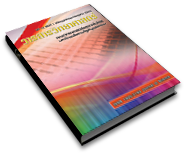การพัฒนาวิธีประเมินลำดับความสำคัญในการซ่อมบำรุงอาคาร กรณีศึกษาอาคารเรียนในมหาวิทยาลัย
Keywords:
การจัดการงานซ่อมบำรุง, การซ่อมบำรุงอาคาร, ลำดับความสำคัญงานซ่อมบำรุง, แขนงการตัดสินใจ, Maintenance management, Building maintenance, Maintenance prioritisation, Decision modelAbstract
บทคัดย่อ
อาคารสาธารณะที่ทรุดโทรมสะสมจากช่วงวิกฤติเศรษฐกิจของไทยและแผนปฏิรูประบบงบประมาณ แบบเน้นผลงานเป็นปัจจัยผลักดันสู่การเริ่มต้นวางระบบจัดการซ่อมบำรุงระยะยาวสำหรับองค์กรขนาดใหญ่ แต่ อุปสรรคที่สำคัญคือการขาดหลักเกณฑ์การตัดสินใจที่เหมาะสมในการเลือกใช้วิธีซ่อมบำรุงส่วนต่างๆ ในอาคาร รวมไปถึงขาดระบบการประเมินลำดับงาน งานวิจัยนี้จึงมุ่งหาแนวทางที่จะแก้ปัญหาดังกล่าวโดยศึกษาตัวแบบ สำหรับเลือกใช้ระบบซ่อมบำรุงแบบต่างๆ และประเมินลำดับความสำคัญในการซ่อมบำรุงอาคารสถานที่ เพื่อใช้ วางแผนแม่บทการซ่อมบำรุงระยะยาว และมุ่งชี้ให้เห็นความความสำคัญของแผนงานซ่อมบำ รุงอาคารของ องค์กร โดยวิธีวิจัยแบ่งเป็น 3 ส่วน ส่วนแรกเป็นการศึกษาระบบงานซ่อมบำรุงอาคารสถานที่ของมหาวิทยาลัย ราชภัฏพิบูลสงครามโดยวิธีการทบทวนเอกสารต่างๆ รวมทั้งสัมภาษณ์ผู้เกี่ยวข้อง ผลที่ได้นำมาประมวลสู่แบบ การตัดสินใจวางแผนงบประมาณซ่อมบำรุง ส่วนที่สองเป็นการศึกษาระบบการประเมินความเร่งด่วนรูปแบบ ต่างๆที่มีการใช้อยู่ในระดับสากล เพื่อนำมาทดสอบกรณีศึกษาจริงในส่วนที่สามกับอาคารเรียนรวมที่มีอายุการ ใช้งาน 8 ปีของมหาวิทยาลัย แล้วเปรียบเทียบผลที่ได้จากแบบประเมินทั้งหมดการสำรวจสภาพอาคารจริง
ผลการศึกษาพบว่า การจัดการซ่อมบำรุงอาคารสถานที่ของมหาวิทยาลัยยังเป็นแบบการซ่อมบำ รุงเมื่อ วิบัติ และยังมิได้พัฒนาระบบข้อมูลการซ่อมบำรุงอาคาร ผลการวิจัยส่วนต่อมา คือการสร้างแขนงการตัดสินใจ ซ่อมบำรุงของมหาวิทยาลัยจากลำ ดับความสำ คัญของผลกระทบจากความเสียหายขององค์อาคารจาก การประยุกต์แบบจำลองของ Horner และคณะ (1997) โดยแยกองค์อาคารออกเป็นกลุ่มๆ ได้แก่ ส่วนที่มี ผลกระทบต่อความปลอดภัย ส่วนที่จะมีผลกระทบมาก และส่วนที่จะมีผลกระทบน้อย จากนั้นจึงทำการวิเคราะห์ ว่าแต่ละส่วนควรใช้ระบบการจัดการซ่อมบำรุงแบบใด ระหว่าง 1) การซ่อมเมื่อวิบัติ 2) การซ่อมตามช่วงเวลา และ 3) การตรวจซ่อมตามสภาพ แล้วทดสอบแบบจำ ลองการตัดสินใจที่ได้กับแบบจำ ลองการประเมิน ความสำคัญรูปแบบอื่นๆ อีก 3 รูปแบบ ผลที่ได้เป็นลำดับการซ่อมบำรุงอาคารที่ให้ผลการประเมินสอดคล้องกับ การสำรวจองค์อาคารจริง รายงานวิจัยนี้ยังเสนอแนวทางในการพัฒนาผลจากการวิจัยไปสู่การสร้างโปรแกรม ประเมินด้วยคอมพิวเตอร์ เพื่อเพิ่มศักยภาพในการประเมินอาคารของมหาวิทยาลัยทั้งหมด ผลที่ได้จะเป็น ประมาณการงบประมาณในการซ่อมบำรุงอาคารทั้งหมดของมหาวิทยาลัยตลอดอายุการใช้งาน
คำสำคัญ: การจัดการงานซ่อมบำรุง, การซ่อมบำรุงอาคาร, ลำดับความสำคัญงานซ่อมบำรุง, แขนงการตัดสินใจ
Abstract
Accumulated deteriorations of the buildings since the 90’s economic recession and the government’s decentralization policy were the main reasons for Local Government Organisations (LGOs) develop their property maintenance plan targeting to establish the long-term maintenance program. It was awkward due to building maintenance management in Thailand has not well systemized. Long-term maintenance program was stumped in the beginning by questions; which part of the building should be fixed, and how it should be maintained? This study aims to solve such problems by implementing the priorities assessments system in order to draw up a long-term maintenance program for Pibulsongkram Rajabhat University (PSRU) as a representative case.
A case study and personal interview were used for study the current maintenance system of PSRU in order to acquire information for develops the priorities criteria. It was discovered that current maintenance system in PSRU still lags behind and did not ready for the long-term plan as the maintenance issues have never been existed in the corporate strategy and the management attitude was not patronized. Moreover, it was also revealed that staffs have inadequate skills and knowledge, and lack of support system. The priority assessment guideline was drawn up by simplifying the Horner’s decision model to select an optimal strategy for individual building element concerning maintenance strategies of the organization. Through the model, the building elements would be classified into 3 groups; 1) safety-effected, 2) major-effected, and 3) minoreffected. Three maintenance strategies; 1) failure-based, 2) time-base, and 3) condition-based will be considered as the strategic options for each item. The options will be eliminated by conditions of the model to produce the results as the optimal strategy for each item. A simulation of a case study has been carried out to experience the capable of the model. It was satisfying as the model can perform under the specific criteria, and easy to use. However, it was also reveal some deficiencies that the results need to be reviewed occasionally as it relied on the capacity of the maintenance unit, and it still required additional works to formulate the practical maintenance program afterward.
Keywords: Maintenance management, Building maintenance, Maintenance prioritisation, Decision model
Downloads
How to Cite
Issue
Section
License
Each article is copyrighted © by its author(s) and is published under license from the author(s).










